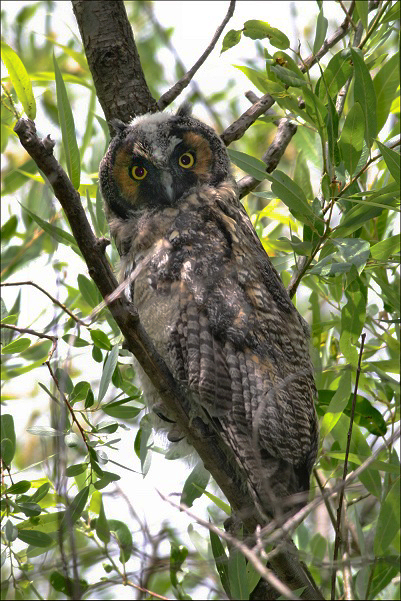
Location: Blue Sky Ecological Preserve, Poway, CA
Date: 2004-05-29
Lens: Canon 400mm F5.6

 Long-Eared Owl
Asio otus
Long-Eared Owl
Asio otus
 Description
DescriptionLong-eared Owls are strictly nocturnal, venturing out at night to hunt for food, which is primarily mammals. They will often cover great distances in search of food. More than 300,000 regurgitated food pellets have been studied and has shown that amphibians, reptiles, fish, and insects are rarely consumed. Like other nocturnal owls, this bird is highly sensitive to sound, such as the squeaking of a mouse. The eye disks funnel sound to the ears, which are asymmetrical in shape, size, and position. The difference in time that it takes for sound to travel to each ear is enough to allow the owl to pinpoint its prey. Although their eyesight is excellent, it has been proven that owls can catch their prey in total darkness by sound alone.
Gray-brown upperparts with small black and white markings. White underparts with black cross-shaped markings. Large, rounded head with long ear tufts set close together. Rusty or chestnut facial disks. Yellow eyes. Sexes similar. 15 inches in length.
Deciduous and coniferous forests.
 Nesting
Nesting4-5 white eggs. The eggs have a 26-28 day incubation period. Fledging occurs in 23-26 days. The nest is a deserted crow, hawk, or squirrel nest.